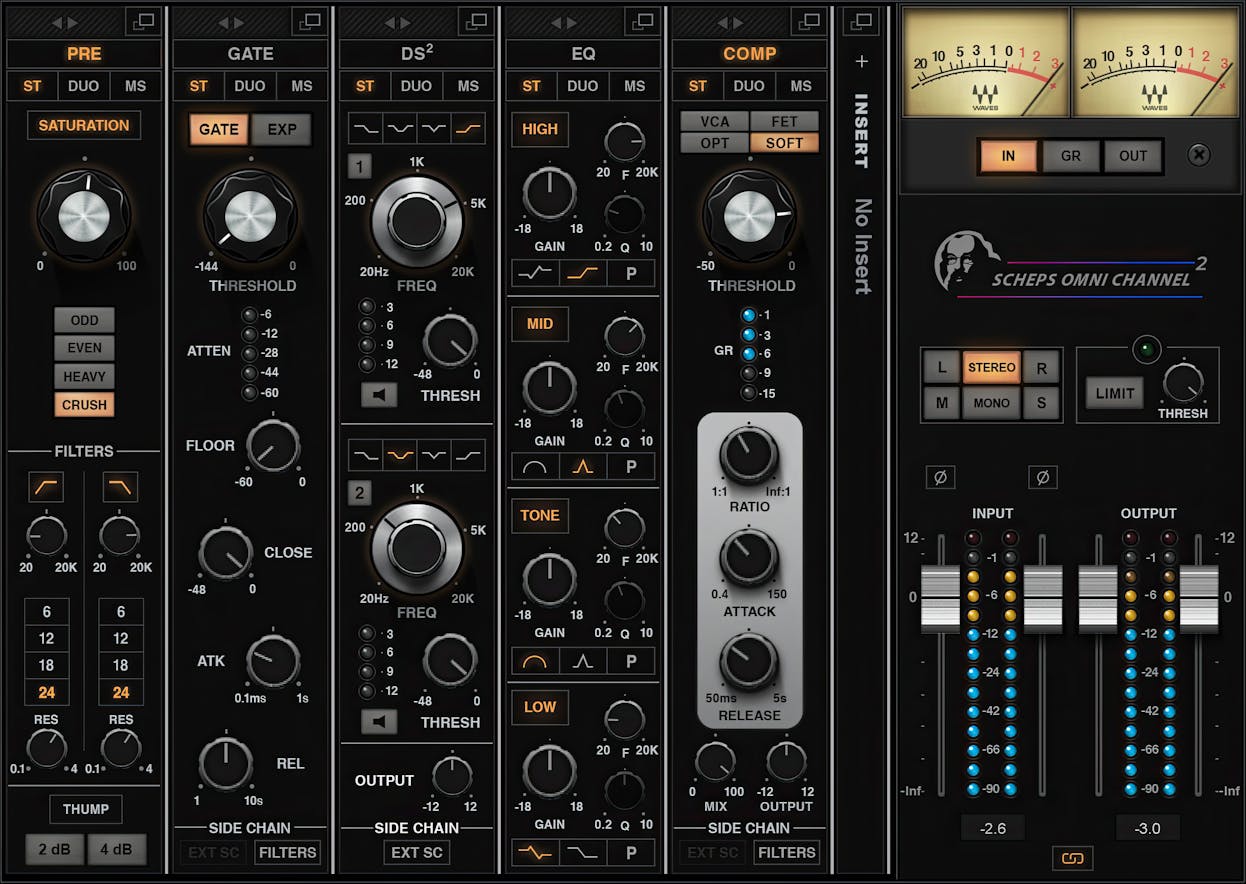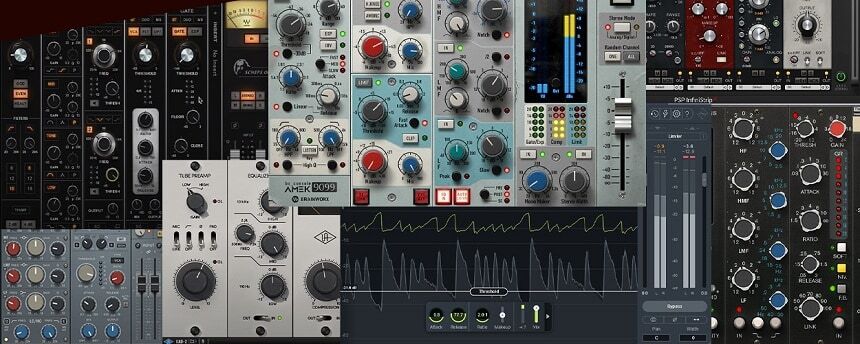How to use Channel Strip plugins
Introduction
Channel strip plugins serve as versatile tools that bring together several essential processors in one convenient package. These plugins are akin to a virtual rack of gear, offering a collection of tools typically used in mixing audio tracks. Understanding how to wield these plugins effectively can significantly enhance your mixing workflow and the overall sound quality of your productions.
Components of a Channel Strip
A channel strip plugin typically comprises multiple processors that play crucial roles in shaping and refining audio. The primary components commonly found within a channel strip include:
EQ (Equalizer): The EQ allows precise control over the tonal balance of a sound. It enables adjustments in frequencies, boosting or cutting specific ranges to shape the timbre of an instrument or vocal.
Compressor: This tool helps regulate the dynamic range of an audio signal, evening out volume spikes and enhancing the overall consistency of the sound.
Limiter: A limiter is similar to a compressor. It caps the maximum amplitude of a signal, preventing it from exceeding a set threshold, thereby controlling and restricting the volume peaks to avoid distortion or clipping in the audio output.
Gate/Expander: A gate or expander is employed to manage background noise by attenuating or silencing signals below a set threshold, useful for cleaning up tracks. For more info on gates/expanders check out this blog
Saturation/Drive: Saturation modules emulate analog warmth or add harmonic distortion, enriching the sound by imparting a sense of character.
De-esser: Focused on controlling sibilant sounds (like ‘s’ and ‘sh’ sounds) in vocal recordings, de-essers aim to reduce harshness without compromising clarity. For more info on de-essers check out this blog
5 Popular Channel Strip Plugins
Among the myriad of options available, these popular channel strip plugins stand out for their functionality and features:
- Waves Scheps Omni Channel: Created by legendary engineer Andrew Scheps this channel strip offers a comprehensive array of modules and an intuitive layout. it’s highly versatile and used across various genres.

- SSL Native Channel Strip 2: Modeled after the legendary SSL 9000k console, it provides classic SSL EQ, compressor, stereo width, and gate modules.
- Brainworx bx_console AMEK 200: This is a console plugin that combines the sound of the AMEK EQ 200, AMEK Mastering Compressor, and the gate/expander of the bx_console AMEK 9099; A dream combination resulting in a top end channel strip ideal for both mixing and mastering purposes.

- Arturia Pre TridA: This all-in-one plug-in models the classic 70s Trident console. Its simple layout and musical EQ make it a great choice for those looking for a vintage sound.
- UAD SSL E Channel Strip: Another authentic replication of an SSL console’s channel strip, providing vintage character and precision.
Advantages of Channel Strip Plugins
Channel strip plugins offer several advantages in the realm of music production, contributing to streamlined workflows and enhanced sonic outcomes.
Convenience and Workflow Efficiency:
The integration of multiple processors within a single plugin minimizes the need for loading multiple plugins onto individual tracks. This consolidation streamlines the mixing process, allowing for quicker access to essential tools and a more organized workspace. It simplifies routing and eases the burden on system resources, enhancing overall efficiency.
Cohesive Signal Processing:
Using a channel strip ensures consistent processing across all tracks. This uniformity in signal processing helps maintain a cohesive sonic character throughout the mix. The ability to apply the same EQ, compression, and other processing settings across multiple tracks contributes to a more unified sound, crucial for achieving a cohesive mix.
Signal Flow and Integration:
Channel strips often come with optimized signal flow, reflecting the signal path found in analog consoles. This intuitive layout facilitates a logical signal processing sequence, making it easier for users to understand and apply different processing stages. Moreover, some channel strips offer integration with DAWs, allowing seamless control and automation within the software environment.
Presets and Consistency:
Many channel strip plugins offer presets that serve as starting points or templates for specific instruments or genres. These presets provide a valuable reference and help maintain consistency across different projects or tracks. They can significantly speed up the mixing process while ensuring a level of quality and consistency in the final output.
How to Use a Channel Strip Plugin
Channel strip plugins, with their consolidated array of processors, provide a straightforward yet powerful approach to shaping and enhancing audio. Effectively employing channel plugins can significantly impact the speed, workflow and overall quality of your mixes. Fully mastering a particular channel strip is often preferable to using a random selection of individual processors that you may not be as familiar with. Here’s a step-by-step guide on effectively utilizing a channel strip plugin within your Digital Audio Workstation (DAW):
1. Inserting the Channel Strip:
- Open your DAW and navigate to the channel or track where you want to apply the channel strip plugin.
- Locate the plugin section or insert effects, then choose and insert the desired channel strip plugin onto the track.
2. Signal Flow and Module Order:
- Understand the signal flow within the channel strip. Typically, EQ comes before dynamics processors like compression or gating.
- Ensure you follow the standard signal path or customize it based on your requirements.
3. Setting Parameters:
- Begin with the EQ module. Identify frequency areas that require adjustment and use the EQ bands to shape the tonality of the sound.
- Move on to the compressor. Adjust parameters such as threshold, ratio, attack, release, and makeup gain to control the dynamics.
- Explore other modules like gate, saturation, or de-esser, adjusting parameters as needed.
4. Fine-Tuning and A/B Comparison:
- Make subtle adjustments and listen carefully to how each change affects the sound.
- Compare the processed and unprocessed (bypassed) versions using the plugin’s bypass feature or A/B comparison tools in your DAW. It’s often useful to close your eyes whilst performing A/B comparisons. Press the bypass button several times and then use your ears only to analyse the differences.
5. Presets as Starting Points:
- Utilize presets as a starting point. Many channel strip plugins offer presets tailored for different instruments or scenarios. These can provide useful settings to build upon. You can also choose to save your own presets. For example, this can be useful when working with a particular vocalist over numerous tracks and projects.
6. Automation and Parameter Modulation:
- Experiment with automation to create dynamic changes in plugin parameters over time. This technique adds movement and variation to your mix.
- Some plugins offer modulation options, allowing parameters to be modulated rhythmically or dynamically for creative effects.
7. Parallel Processing with Channel Strips:
- Explore parallel processing by duplicating the track and applying different settings on each instance of the channel strip. Blend the processed and unprocessed signals for unique tonal qualities.
8. Experimentation and Creativity:
- Don’t be afraid to experiment with different settings and combinations of modules. There’s no one-size-fits-all approach; the best settings depend on the context and the desired sound.
9. Gain Staging and Monitoring:
- Pay attention to gain staging to ensure the levels remain optimal throughout the signal chain.
- Monitor the output levels and make adjustments to prevent clipping or excessive signal saturation.
Summary
Channel strip plugins are powerful tools that combine essential processors like EQ, compression, and more into a single interface. They streamline mixing by providing convenience, uniformity, and comprehensive control. These plugins offer efficiency, allow cohesive signal processing, and foster creative exploration. Learning to use channel strips involves understanding signal flow, setting parameters, and experimenting creatively to shape audio with precision and efficiency, ultimately enhancing the overall quality of your mixes. Moreover, they provide the software equivalent of having a million-dollar Mixing console in your DAW and who wouldn’t want that?
Remember – RouteNote Create subscriptions start from as little as $2.99. You also get 10 FREE credits to spend on samples along with access to our FREE sample pack bundle when you sign-up
